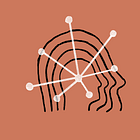Summary: AI has already entered the classroom. Some educators chose to ignore it, others chose fight it. Both approaches will come to the detriment of your students and your institution. To know how to move forward, I created a must-read handbook: A.I. Literacy for Educators.
↓ Go deeper (4 min)
Some people choose to see the ugliness in this world, the disarray. I choose to see the beauty1. I care about the future. And while I hate to admit it, I’m not the youngest anymore. I’m not a teenager growing up in this world. I’m part of the grownups and therefore I feel responsible. We all have our role to play.
One thing close to my heart is education. I can’t imagine what it must feel like to be a student in a time with so much technological advancement. It must be equally exciting as terrifying.
It must be terrifying for educators and teachers as well. AI has found its way to the classroom and it’s not going away. It’s changing the way students find, organize, and relate to information. Education that is solely focused on reproducing knowledge isn’t going to cut it. Instead, critical thinking will be the most important skill of the future.
As an educator, you can choose to ignore AI. But your students won’t. You can also choose to fight it; try to prohibit the use of it. But your students will use it anyway.
Finally, you can adapt.
Who’s teaching the teachers?
To speed up that process of adaptation, I’ve created a handbook on AI literacy for educators, which has all the minimal required knowledge for anyone working in education: teachers, superintendents, directors, school librarians, counselors, coordinators, mentors.
You can download it for free, because AI literacy is not a privilege but a necessity.
AI Literacy for Educators
Free Handbook
Description:
A.I. is already in the classroom. While some teachers adapt, others feel intimidated by this new technology. As an educator, you want to be aware of what’s possible and how students are using AI, because whether you like it or not, they are.
If you click the button, a tab will open and you can download the PDF-file by tapping the icon on the top right corner.
I feel I have at least some authority to speak on this topic, because I’ve been teaching computers how to talk since 2018. For those who don’t know, I’ve seen the rise of chatbots and now AI systems like ChatGPT from up close.
Together with my colleagues at Conversation Design Institute (CDI), I’ve trained 100+ teams in Enterprise organizations around the world. I’ve given guest-lectures about Conversational AI at the Dutch University of Applied Sciences and trained teachers at the university about Conversation Design.
I hope my perspectives can be of modest value.
Keep calm, stay curious
I’m an optimist. I honestly think AI can be a net good for education. But only if we’re smart about it. We can’t ostrich our way out of this one. By arming ourselves with the essential knowledge about what AI can and cannot do, we are better equipped to empower our students and make sense of it all, together.
So, don’t let your fellow educators miss out on this opportunity! Share this post and handbook with your network. Spread the word.
Stay tuned for more,
— Jurgen
Not done reading?
Here are some of my recent articles that you may have missed:
For the attentive reader, yes, that quote is from the series Westworld. A must-watch if you are into dystopian fiction.










Really cool!
Minor "Daniel being *that guy* note" - there's currently no free version available for Midjourney. It's all paid.
So necessary. Thanks for publishing this.